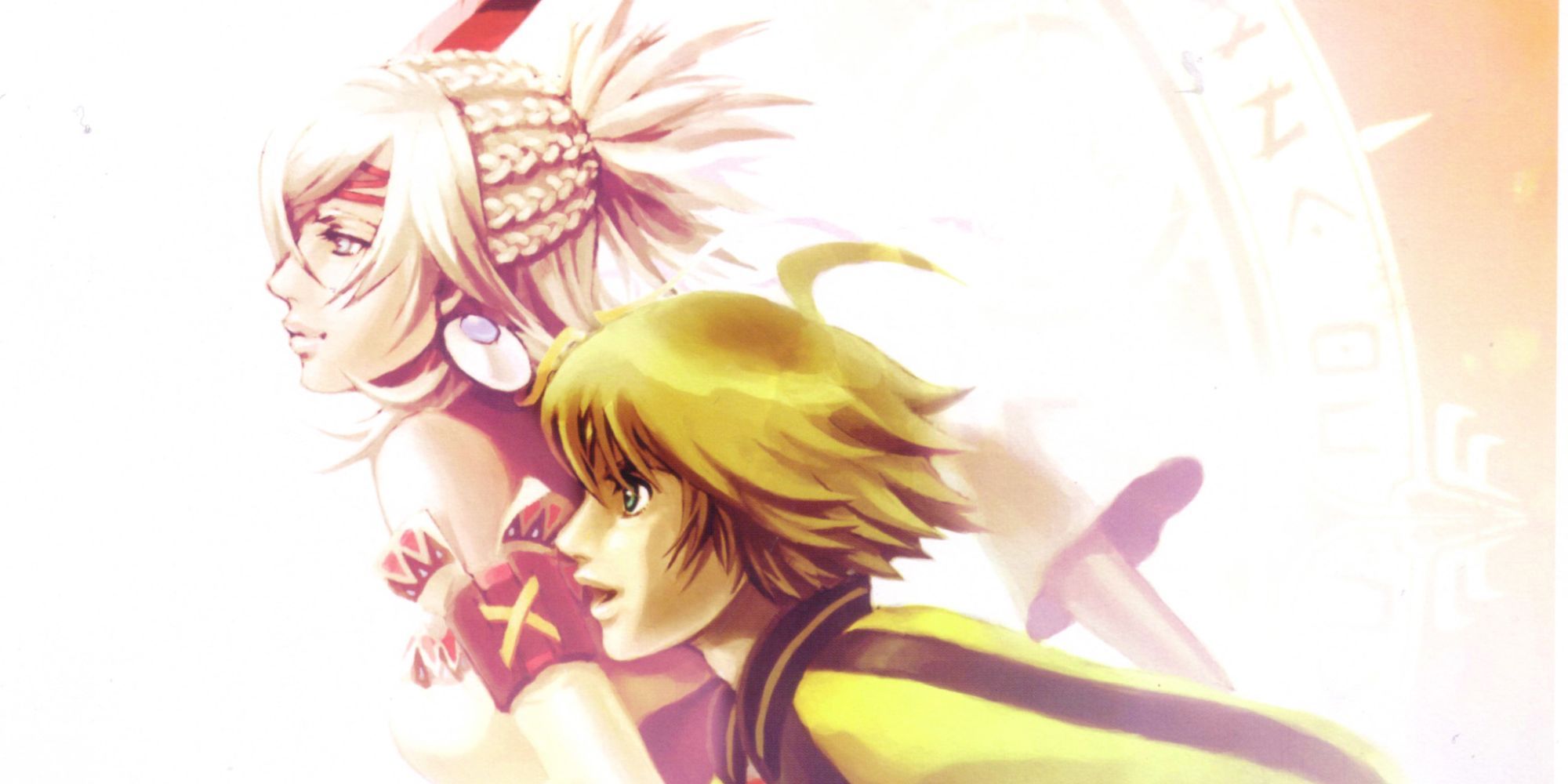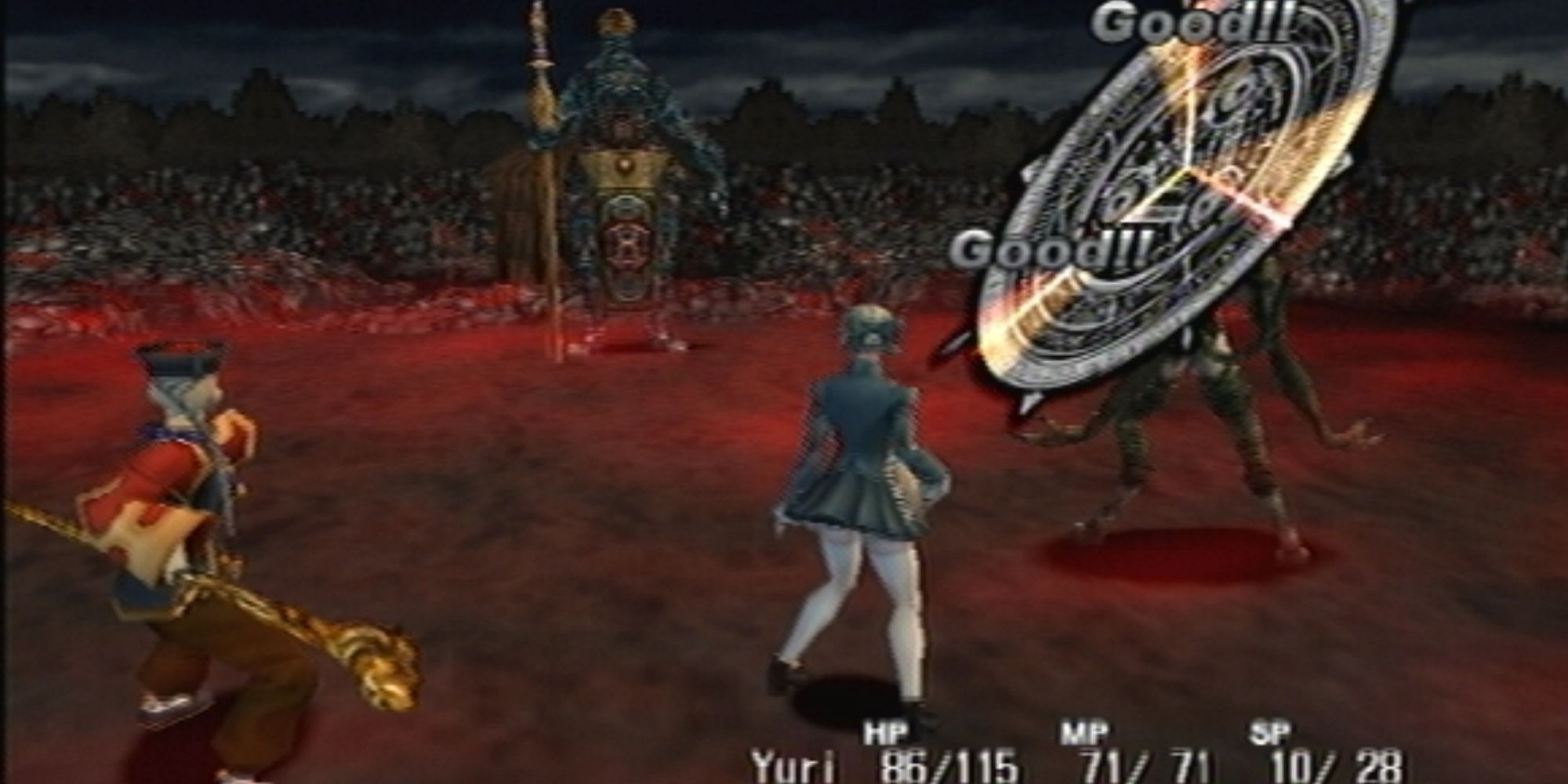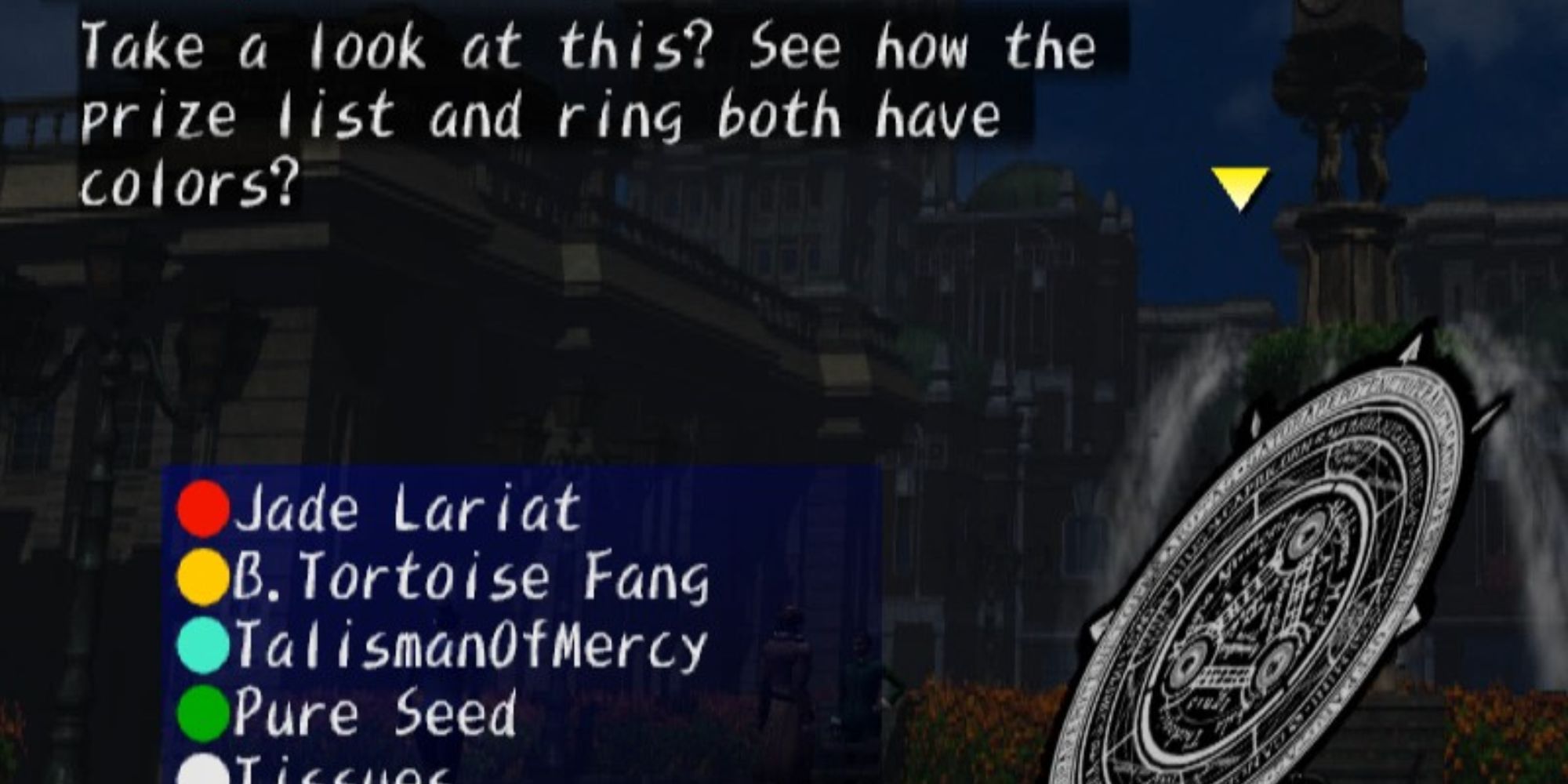Matsuzo Machida, creator of Shadow Hearts has recently succeeded in gathering funding for a spiritual successor to his past works, titled Penny Blood. Not surprisingly, the key mechanic he coined for Shadow Hearts—the Judgement Ring—is making a comeback in a new form, called the Psycho Sigil. So in anticipation of what will hopefully be a great comeback for a seriously forward-thinking feature, let’s look back at what made the original system so unique among other turn-based games.
The Judgement Ring is a circle that appears on-screen whenever you take an action in battle (and sometimes outside of them as well). Once you decide on an action like attacking, casting magic spells, or using items, the circle is shown along with some highlighted sections and a rotating line. You then have to press a designated button the moment the line touches every colored section, otherwise the action ends up weakened or nullified altogether.
This ring appeared in every game from the Shadow Hearts trilogy — Shadow Hearts, Covenant, and From The New World — with small variations, and with each entry, it brought a sense of anticipation and a unique thrill. The outcome of every turn hung in the balance, and the smallest mistake could cost you everything. Not to mention the structure of the ring was different for every party member, depending on each one’s skills and special attributes.
Yuri Hyuga (The Protagonist of Covenant) could have up to five hit areas, while fellow party member Princess Anastasia could equip up to three. Many outside factors altered the ring’s properties in terms of shape, speed of rotation, or hit-area width, such as the character’s specific skills or transformations. Pretty much every skill had a different Judgement Ring and line speed, and Yuri’s ability to fuse with monsters (As well as Shania in From the New World) gave you a variety of skills and rings to get familiar with and master.
The Judgement Ring operates differently from turn-based games by visualizing changes in character parameters, as well as the effects of buffs, debuffs, and skills in a uniquely tangible form. Enemy debuffs might cause the ring speed to be irregular, or the hit areas to disappear, and if you want your attacks to land, you will have to get used to these unpredictable ring statuses. You can’t find an easy way around that either with items or accessories. Even if they give you, for example, extra ring width as an advantage, there will be a cost to pay in other aspects like the visibility of the hit areas, or making the line speed faster or more irregular.
No two turns in Shadow Hearts are the same. The mundane typical JRPG process of clicking through menus and waiting for your choices to play out is replaced in Shadow Hearts by the Ring, which turns a usually tiresome task into a rollercoaster. Even higher-level special attacks are not just MP- based, but governed by challenging levels of ring complexity — in terms of hit areas, number, or ring speed — befitting of the advantage you gain when using them.
The Judgement Ring is described as “having the power to change the world,” and this is not very different from how it’s actually employed in the game. It is literally the power that judges the player’s luck and skill, which are things often left to algorithms or RNG in other games. Side activities like playing the lottery or getting discounts from shops also have outcomes that are decided by the ring, so it always feels like the ring governs your experience, and has you living on the edge with every single decision you make.
The Judgement Rings are also implied to be a representation of the characters’ soul, as you can find some NPC characters called Soul Rings out in the wild without a physical body. So the way the Ring changes over time symbolizes the growth and inner change of each character. This line of thinking adds a thematic charm to your experience with the series, since you get used to the ever-changing ring properties of each character through continuous learning and adaptability, and how they grow alongside these characters.
For example, A firearm user like Margarete (Shadow Hearts Covenant) unlocks skills that gradually decrease in hit-area width to signify that projectile weapons need accuracy to hit, with her snipe ability having one of the narrowest hit areas in the entire game. Anastasia Romanov, another character from Covenant summons animal familiars who attack in her place, with each familiar having its own version of the Judgement ring and no concrete similarities. Learning how each familiar ring work will be a random process, and not a gradual one like Margarete.
The beauty of Shadow Hearts is that it’s always accompanied by a gratifying feeling of hard-earned success. In most JRPGs, you can be on the lookout for the best builds or items, or read a guide about which weapon/character combos are sure to make your trip a smooth one. But in Shadow Hearts, you have to hone a specific skill set oriented towards the Judgement Ring mechanic, and no guide can help you out. Even if you acquire the best skills and weapons, you would still have to get used to their advanced ring levels, cursor speed, and other factors such as enemy debuffs.
The Psycho Sigil in Penny Blood looks like it’s going to end up very similar to the Judgement Ring. It looks like it will elaborate on it in some ways too, introducing a combo system that lets you combine two Psycho Sigils along with their respective hit areas into one big structure, requiring double the concentration from the player, and of course earning them double the reward.
Shadow Hearts — and Penny Blood, by extension — prove you really can twist the basics without revoking the purpose of the game. The Judgement Ring abolished the repetitiveness associated with many classic systems from the same genre, and for that reason, I think Penny Blood deserves to be on the radar of JRPG fans who want to see the genre evolve.




